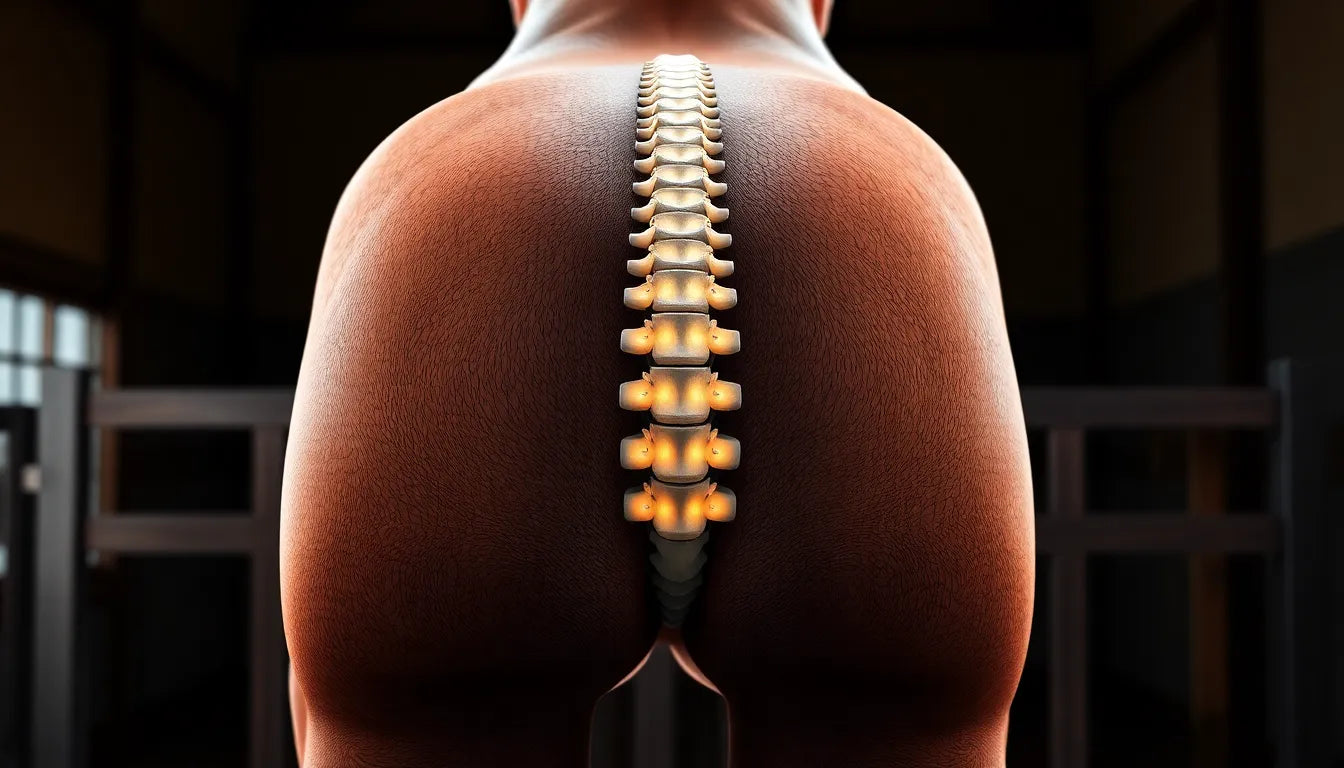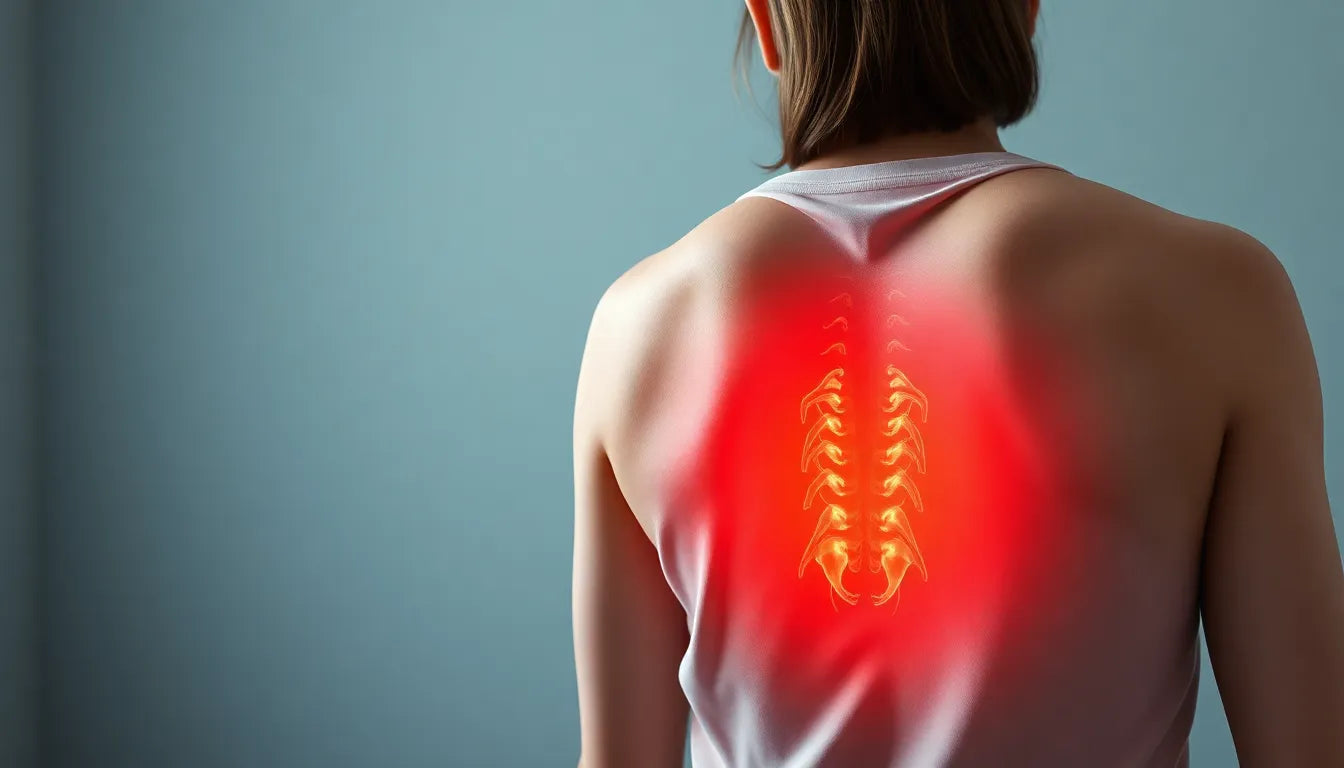When we think of the back, we often consider it merely as a support structure, a pillar that holds us upright. However, the back is a complex system that plays a crucial role in movement, posture, and overall health. Understanding the anatomy of the back is not just for medical professionals; it's essential for anyone interested in maintaining general well-being and preventing injury.
the intricate structure of the back
The back extends from the neck to the gluteal region, encompassing multiple layers and systems. It comprises the skin, muscles, vertebrae, nerves, and blood vessels, each layer serving a specific function that contributes to the back's overall role in the body. By delving into the anatomy of the back, we can gain insights into how these components work together to facilitate movement and maintain posture.
Understanding back anatomy is not just an academic exercise; it has practical applications that can significantly impact our daily lives. Knowledge of how the back functions can aid in injury prevention, enhance ergonomic practices, and inform effective treatments for back pain. Whether you're lifting heavy objects or sitting at a desk for extended periods, awareness of your back's anatomy can help you make informed decisions that protect this vital part of your body.

Men's Posture Shirt™ - White
Patented shirt to improve posture, activate back muscles, and help reduce pain.
visualizing back anatomy
To truly grasp the complexity of the back, visual aids can be incredibly helpful. A labeled diagram of the back provides a clear reference, illustrating the various layers and systems at play. Such a visual guide not only enhances understanding but also serves as a practical tool for identifying areas of concern or interest.
In the sections that follow, we will explore the back's anatomy in greater depth, examining the structural components, muscle groups, and their respective functions. We'll also discuss the clinical relevance of these structures, providing insights into common conditions and potential interventions. Whether you're a student, a healthcare professional, or simply someone curious about how your body works, this exploration of back anatomy promises to be both enlightening and practical.
structural overview of back anatomy
The back's anatomy is a marvel of biological engineering, consisting of several layers that work in harmony to support the body and facilitate movement. At the surface, the skin and subcutaneous tissue provide the first layer of protection and insulation. Beneath this, the muscular system is divided into two main categories: the extrinsic (superficial) muscles and the intrinsic (deep) muscles. These muscle groups are essential for movement and maintaining posture, playing distinct roles in the body's biomechanics.
The vertebral column is the backbone of the back, literally and figuratively. It is composed of the cervical, thoracic, lumbar, and sacral regions, each with specific functions and characteristics. The cervical region supports the head and allows for its range of motion. The thoracic region anchors the ribs, providing stability and protection for the thoracic organs. The lumbar region bears much of the body's weight and is a common site of back pain due to its load-bearing role. Finally, the sacral region connects the spine to the pelvis, completing the structural framework.
Additionally, the back's anatomy includes neural and vascular components. The arterial and venous supply ensures that muscles and tissues receive the necessary nutrients and oxygen, while the innervation allows for communication between the brain and the back muscles, coordinating movement and response to stimuli.
muscle groups and their essential functions
The superficial muscles of the back, such as the trapezius and latissimus dorsi, are primarily responsible for the movement of the limbs and maintaining posture. The trapezius, for example, helps in moving the shoulder blades and extending the neck, while the latissimus dorsi plays a crucial role in arm movement, particularly in actions like pulling and lifting.
In contrast, the deep muscles, including the erector spinae and the transversospinalis group, are vital for maintaining spinal stability and posture. The erector spinae is a group of muscles that runs along the spine, facilitating the extension and lateral flexion of the vertebral column. The transversospinalis group, located deeper within the back, assists in stabilizing the spine and coordinating its complex movements.
clinical relevance and common conditions
Understanding the anatomy of the back is crucial for identifying and treating common conditions such as herniated discs and muscle strains. Bony landmarks like the vertebrae are essential in medical examinations and procedures, serving as reference points for diagnosis and treatment. Conditions like herniated discs occur when the soft inner material of a disc pushes through a tear in its outer layer, often leading to pain and nerve compression.
Muscle strains, another common issue, involve the overstretching or tearing of muscle fibers, typically resulting from overuse or improper lifting techniques. These conditions highlight the importance of anatomical knowledge in both preventive and therapeutic contexts, emphasizing the need for proper ergonomic practices and body mechanics.

Lumbar support belt
Adjustable lower back belt for relief, stability, and everyday comfort.
quick reference table for major back muscles
| Muscle | Origin | Insertion | Function | Innervation |
|---|---|---|---|---|
| Trapezius | Occipital bone, ligamentum nuchae, thoracic vertebrae | Clavicle, acromion, spine of the scapula | Moves scapula, extends neck | Accessory nerve (CN XI) |
| Latissimus dorsi | Lower thoracic vertebrae, lumbar fascia, iliac crest | Intertubercular groove of the humerus | Arm extension, adduction, and medial rotation | Thoracodorsal nerve |
| Erector spinae | Posterior sacrum, iliac crest, lumbar vertebrae | Various points along the vertebral column | Extends and laterally flexes spine | Dorsal rami of spinal nerves |
| Transversospinalis | Transverse processes of vertebrae | Spinous processes of superior vertebrae | Stabilizes and rotates spine | Dorsal rami of spinal nerves |
This detailed exploration of back anatomy underscores its complexity and the critical role it plays in our daily lives. Understanding these structures not only aids in medical contexts but also empowers individuals to take proactive steps in maintaining their back health. In the following sections, we will delve further into the spine's specific roles and explore interactive content that can enhance your understanding of back anatomy.
understanding the spinal column and its role
The spinal column is a vital component of the back's anatomy, serving as the main support structure and a conduit for the nervous system. It consists of 33 vertebrae divided into five regions: cervical, thoracic, lumbar, sacral, and coccygeal. Each region has specific roles that contribute to the back's overall function and flexibility.
The cervical vertebrae, located at the top of the spine, support the skull and allow for a wide range of head movements. Below them, the thoracic vertebrae are connected to the ribs, providing stability and protection for vital organs. The lumbar vertebrae are larger and designed to bear the body's weight, making them a common site for back pain and injury.
The sacral region forms the back of the pelvis, providing a strong foundation for the spine and supporting the weight of the upper body. Finally, the coccygeal vertebrae, or tailbone, are remnants of a vestigial tail and serve as attachment points for various muscles and ligaments.
interactive learning tools for back anatomy
To enhance understanding of back anatomy, interactive content such as 3D models and dynamic diagrams can be invaluable. These tools allow users to explore the back's structure in a more engaging and comprehensive way, providing a deeper insight into how the various components work together to support the body and facilitate movement.
Using these interactive resources, individuals can visualize the alignment of vertebrae, observe the muscle layers in action, and understand the intricate network of nerves and blood vessels. Such tools are particularly beneficial for students and healthcare professionals seeking to deepen their anatomical knowledge.
frequently asked questions
What are the main muscles of the back?
The primary muscles of the back include the trapezius, latissimus dorsi, erector spinae, and the transversospinalis group. The trapezius and latissimus dorsi are superficial muscles responsible for limb movement and posture, while the erector spinae and transversospinalis are deep muscles that maintain spinal stability and facilitate complex movements.
How does the spine support movement?
The spine supports movement through its flexible structure, which consists of interlocking vertebrae cushioned by intervertebral discs. This design allows for a range of motion, including bending, twisting, and extending, while maintaining stability and protecting the spinal cord.
What are common back injuries and their anatomical causes?
Common back injuries include muscle strains, herniated discs, and sciatica. Muscle strains occur from overstretching or tearing muscle fibers, often due to improper lifting techniques. Herniated discs happen when the soft inner material of a disc protrudes through its outer layer, compressing nearby nerves. Sciatica is characterized by pain radiating along the sciatic nerve, usually due to compression from a herniated disc or bone spur.
How can ergonomic aids help with back health?
Ergonomic aids such as posture correctors and ergonomic furniture can significantly enhance back health by promoting proper alignment and reducing strain on the back muscles and spine. These tools help maintain a neutral posture, distribute weight evenly, and minimize the risk of injury during daily activities.
In conclusion, understanding the anatomy of your back is crucial for maintaining overall health and preventing injury. By exploring the structure and function of the back, you can make informed decisions about your well-being and take proactive steps to protect this vital part of your body. Whether through interactive tools or practical ergonomic solutions, knowledge of back anatomy empowers you to lead a healthier, more informed life.
Kilder
- Medical News Today. (2023). "Back Anatomy."
- NCBI. (2019). "Anatomy, Back."
- Cleveland Clinic. (2023). "Back Muscles."
- Cleveland Clinic. (2023). "Spine Structure and Function."
- TeachMeAnatomy. (2023). "Back."
- Globus Medical. (2023). "Anatomy of the Spine."
- University of Maryland Medical System. (2023). "Spine Anatomy and Function."
- University of Rochester Medical Center. (2023). "Anatomy of the Spine."


















